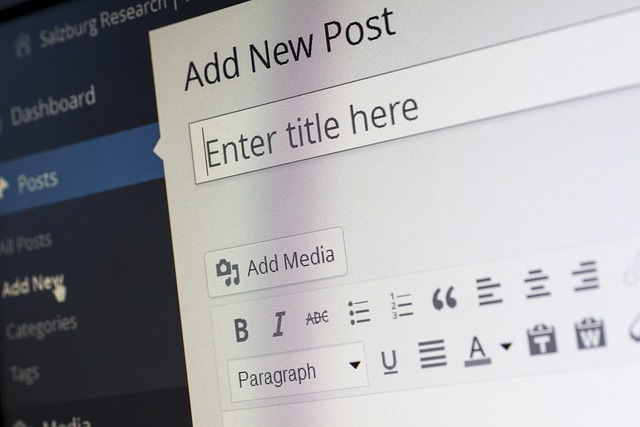Master WordPress: Build Stunning Websites with Ease
Unlock the full potential of WordPress to build stunning, fast, and responsive websites that captivate your audience. Discover the best themes, essential plugins, and powerful customization techniques that allow you to create unique online experiences without coding. Whether you're a beginner or a pro, master the art of website creation and boost your online presence with SEO-friendly tools and tips

Getting Started with How to Build a WordPress Site
Building a WordPress website involves several key steps that form the foundation of your online presence. First, you need to secure domain registration and hosting services. Many hosting providers offer one-click WordPress installation, making the setup process remarkably straightforward. Once installed, you’ll access the WordPress dashboard—your command center for website management.
The dashboard provides intuitive navigation to all WordPress features, including content creation tools, design customization options, and plugin management. For beginners, it’s advisable to start by exploring the dashboard thoroughly before making significant changes. WordPress also offers a library of helpful tutorials directly within the platform that guide you through basic setup procedures.
Remember that building a successful website isn’t just about the technical setup—it’s about planning your site structure, understanding your audience, and creating content that serves your purpose. Before diving into design elements, outline your website’s main pages and content hierarchy to ensure a clear navigation path for visitors.
Choosing the Perfect WordPress Themes for Your Website
WordPress themes determine your website’s visual appearance and functionality. With thousands of options available, selecting the right theme can seem overwhelming. Premium themes from marketplaces like ThemeForest typically offer more features and better support than free alternatives, though many free themes from the official WordPress repository provide excellent starting points.
When evaluating WordPress themes, consider factors beyond aesthetics: responsiveness across devices, loading speed, compatibility with major plugins, and regular updates by the developer. Industry-specific themes cater to particular business needs, offering specialized features for restaurants, photographers, e-commerce stores, and more.
Most modern WordPress themes include customization options through the native Customizer tool, allowing you to adjust colors, layouts, and typography without coding. For those seeking greater control, page builder-compatible themes work with visual editing plugins like Elementor or Beaver Builder, enabling drag-and-drop design capabilities that significantly simplify the website creation process.
Essential Website Customization Tips for a Unique WordPress Site
WordPress customization ranges from simple adjustments to comprehensive overhauls, allowing you to create a website that truly reflects your brand identity. The built-in Customizer provides a visual editor to modify theme elements like headers, footers, colors, and fonts. For deeper customization, consider learning basic CSS—many themes include a custom CSS section where you can add specific style modifications.
Child themes represent one of the most powerful customization approaches in WordPress. A child theme inherits all functionality from a parent theme while allowing you to make changes without affecting the original code. This ensures your customizations remain intact when the parent theme updates.
Beyond visual elements, customization extends to navigation menus, widget areas, and post types. Custom post types allow you to organize specialized content like portfolio items or testimonials in ways that standard posts or pages cannot accommodate. The combination of these customization techniques enables you to build a website that stands out from cookie-cutter templates while maintaining the structural advantages of WordPress.
Best Plugins for WordPress: Extending Your Website’s Capabilities
Plugins are the building blocks that extend WordPress functionality beyond its core features. While the WordPress repository offers over 58,000 free plugins, certain categories have established themselves as essential for most websites. Security plugins like Wordfence or Sucuri protect your site from malicious attacks. Performance optimization tools like WP Rocket or LiteSpeed Cache improve loading times. Contact form plugins like WPForms or Contact Form 7 enable visitor interaction.
For content management, Advanced Custom Fields and Yoast SEO have become industry standards. E-commerce websites typically rely on WooCommerce, which powers over 28% of all online stores. When selecting plugins, prioritize those with regular updates, strong ratings, and active support communities.
It’s crucial to maintain a balanced approach to plugin installation—each additional plugin potentially impacts site performance and security. Regularly audit your plugins, removing those that are inactive or redundant. Before adding new plugins, consider whether the functionality could be achieved through existing tools or simple code snippets to avoid unnecessary bloat.
Implementing WordPress SEO Tips for Better Visibility
Search engine optimization is essential for ensuring your WordPress website reaches its intended audience. WordPress offers several built-in features that support SEO best practices, but optimizing your site requires deliberate implementation of key techniques. Start with proper permalink structure, using descriptive URLs that include target keywords rather than default numeric structures.
Yoast SEO or Rank Math plugins provide comprehensive tools for optimizing individual pages and posts, including meta title and description editors, readability analysis, and schema markup implementation. These plugins also generate XML sitemaps automatically, helping search engines index your content efficiently.
Beyond technical optimization, content quality remains paramount for SEO success. Create valuable, well-structured content that addresses user search intent. Use appropriate heading hierarchies, include relevant images with optimized alt text, and incorporate internal linking to establish site architecture. Page loading speed significantly impacts both user experience and search rankings—optimize image sizes, implement caching, and consider a content delivery network (CDN) for global audiences.
Using Page Builders for Advanced WordPress Design
Page builders have revolutionized WordPress website creation, allowing users to design complex layouts without coding knowledge. Popular options like Elementor, Divi Builder, and Beaver Builder provide intuitive drag-and-drop interfaces for creating custom designs. These tools include pre-designed templates and blocks that serve as starting points for nearly any website section.
Most page builders operate on a section-row-module hierarchy, where you first create content sections, then define column structures within those sections, and finally add specific content elements like text, images, buttons, or custom widgets. Advanced features include responsive design controls, animation effects, and conditional display options that show different content based on user behavior or characteristics.
While page builders offer tremendous design flexibility, they can impact site performance if used improperly. Follow best practices like minimizing unnecessary elements, optimizing images, and utilizing the builder’s performance options. For complex websites, consider a hybrid approach where standard pages use the block editor while special landing pages employ the more advanced page builder capabilities.
Conclusion
Mastering WordPress opens up endless possibilities for creating stunning, functional websites without extensive technical knowledge. By understanding the platform’s core features, selecting appropriate themes and plugins, implementing effective customization, and following SEO best practices, you can build websites that not only look professional but also perform well for both users and search engines. As WordPress continues to evolve with features like the block editor and full-site editing, the platform remains at the forefront of accessible website creation, empowering individuals and businesses to establish compelling online presences.




